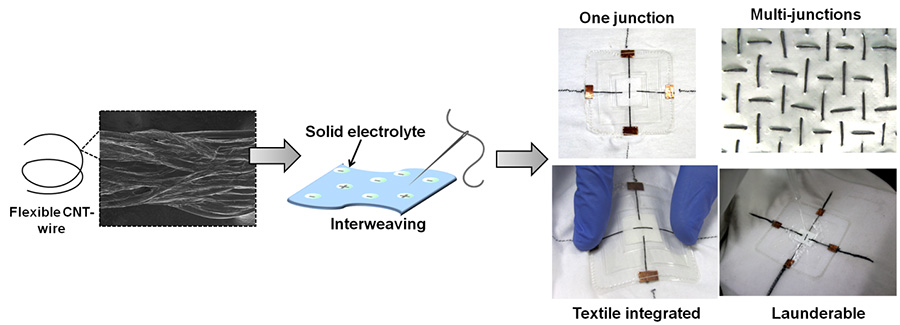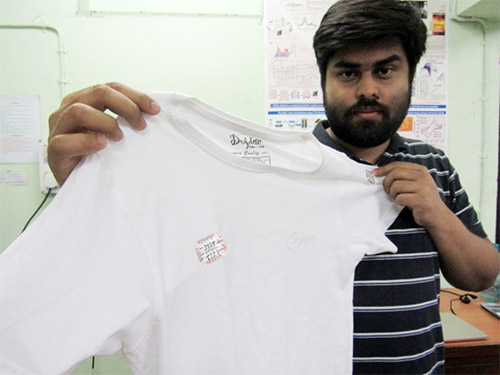Carbon nanotube coated cotton yarns to power wearable devices
Devices embedded in the clothes we wear are en-route to become the order of the day for applications like health-care monitoring, point-of-care diagnostics, military defense and homeland security. The major hurdle for these devices is suitable systems for instantaneously charging them.
Associate Professor, in the Department of chemistry at the Indian Institute of Technology Bombay, Dr. C Subramaniam has been researching nano-architectured energy storage devices, which form the heart of wearable electronics and technologies. The device is not only weave-able but also very flexible and can withstand all mechanical movements and duress that clothing undergoes during daily usage.

Conventional energy storage devices such as Li-ion batteries are not flexible and therefore not amenable for such applications. Besides posing health hazards and being incompatible with clothing or skin, the rigid structure of wearable electronics also poses problems for the movement and comfort of the user. Further, charging and discharging of Li-ion batteries is a huge problem when it comes to wearable and portable applications.
After years of study and research, Dr. Subramaniam came up with an alternative strategy for energy storage devices for wearable applications. His team developed carbon nanotube coated cotton yarns (CNT-wires) that converts the electrical insulating yarn into a metallic conductor thereby behaving like a flexible and pliable electrode. They combined the electrode (CNT-wire) with the electrolyte sheet by a simple and elegant approach of interweaving the CNT wire across the electrolyte to create junctions. These junctions are supercapacitive in nature and can store electrical energy. Since the supercapacitors are created by sewing, they referred it to as “sewcap”.
The advantage of this process is that several 100s and 1000s of sewcaps can be made in a small area and integrated to increase the total amount of energy stored in the system. This scalability is unique as all the junctions synchronized are able to store a large amount of energy. The sewcap device is laminated between polymer sheets to protect from environmental effects such as temperature, humidity, sweat and so on. Further, the intertwining of the final sewcap device is completely adaptable with current processes used in textile industries. The device is not only lightweight and small but, also the first device that has proven to be stable under rigorous washing conditions in the presence of hot water, detergents and high torque.
Envisioning the adaptation of electronics into textile and apparel, Dr Subramaniam has already illustrated carbon nanotube based sewcap’s potential by using a device to light up an LED. The number of capacitors made in a small area can be potentially scaled to increase the total amount of energy stored in the system as per the application demand.
The wearable device is an emerging area of commercial and industrial interest and energy storage for the purpose comes associated with it. As per estimation, the wearable market is expected to touch USD 20 billion by 2020 across the globe. With commercialization, the technology is expected to be in high demand in India as well. This research activity was supported and funded under the DST’s Materials for Energy Storage scheme.































